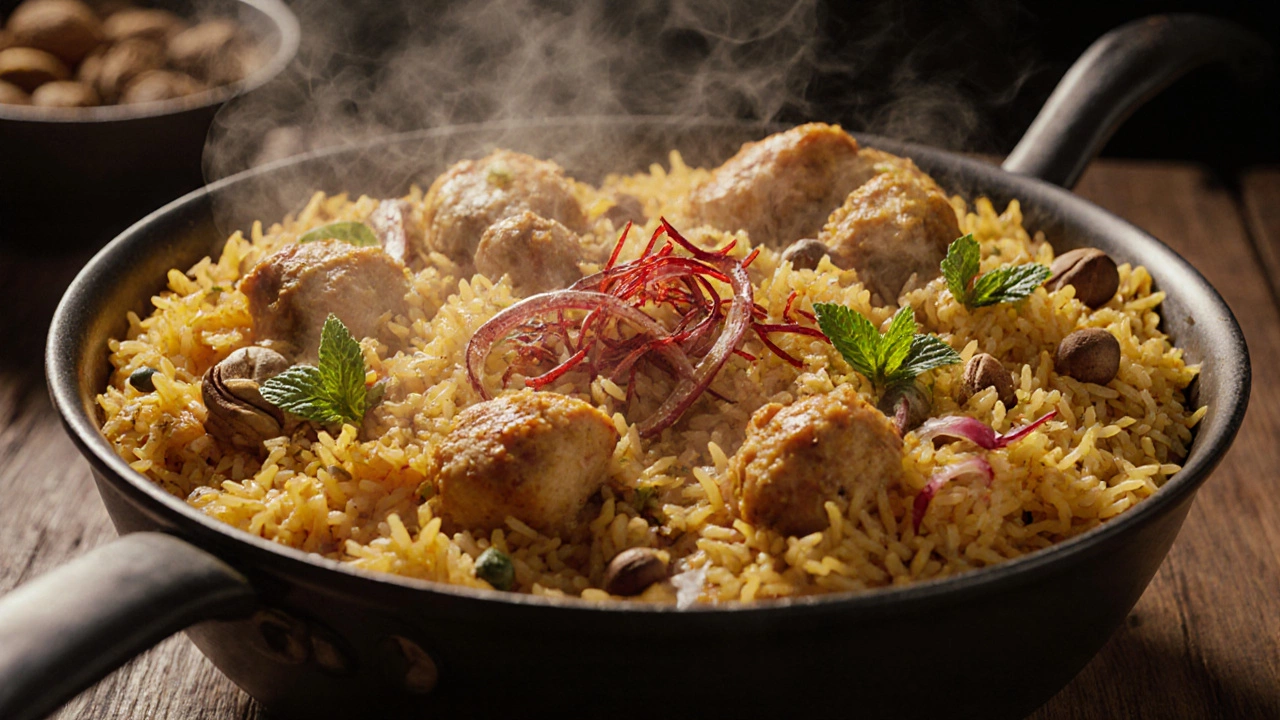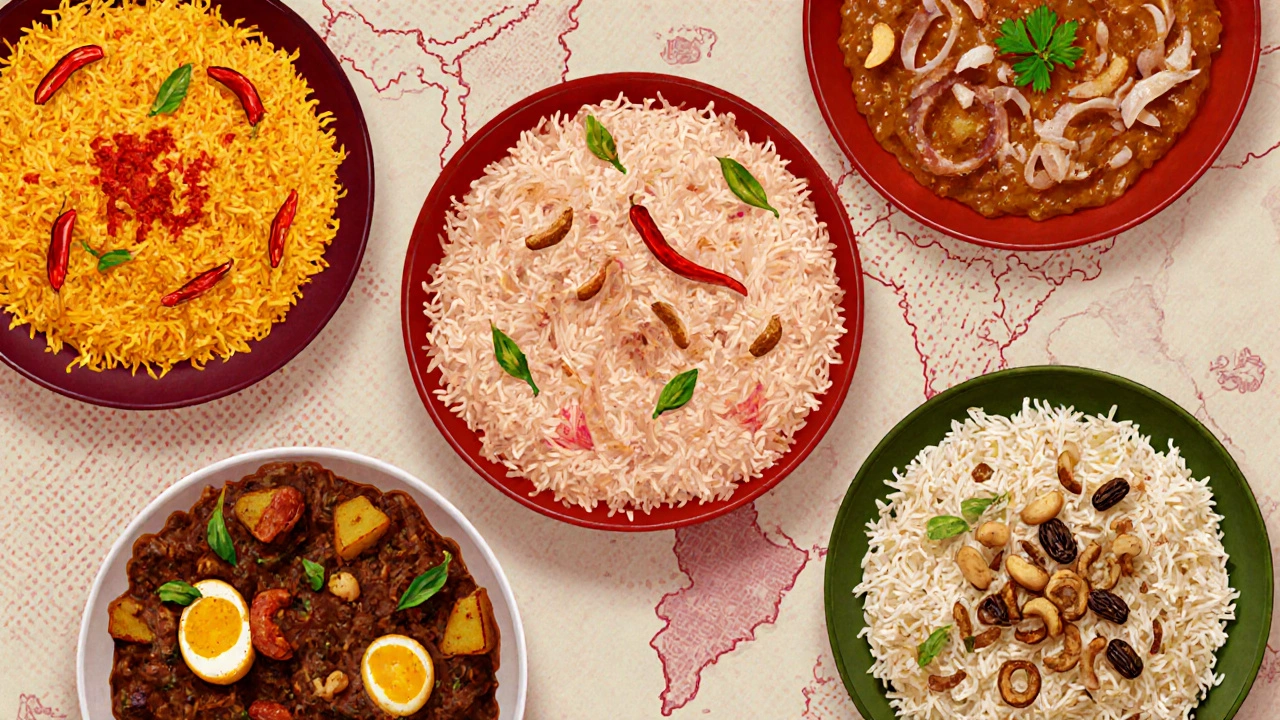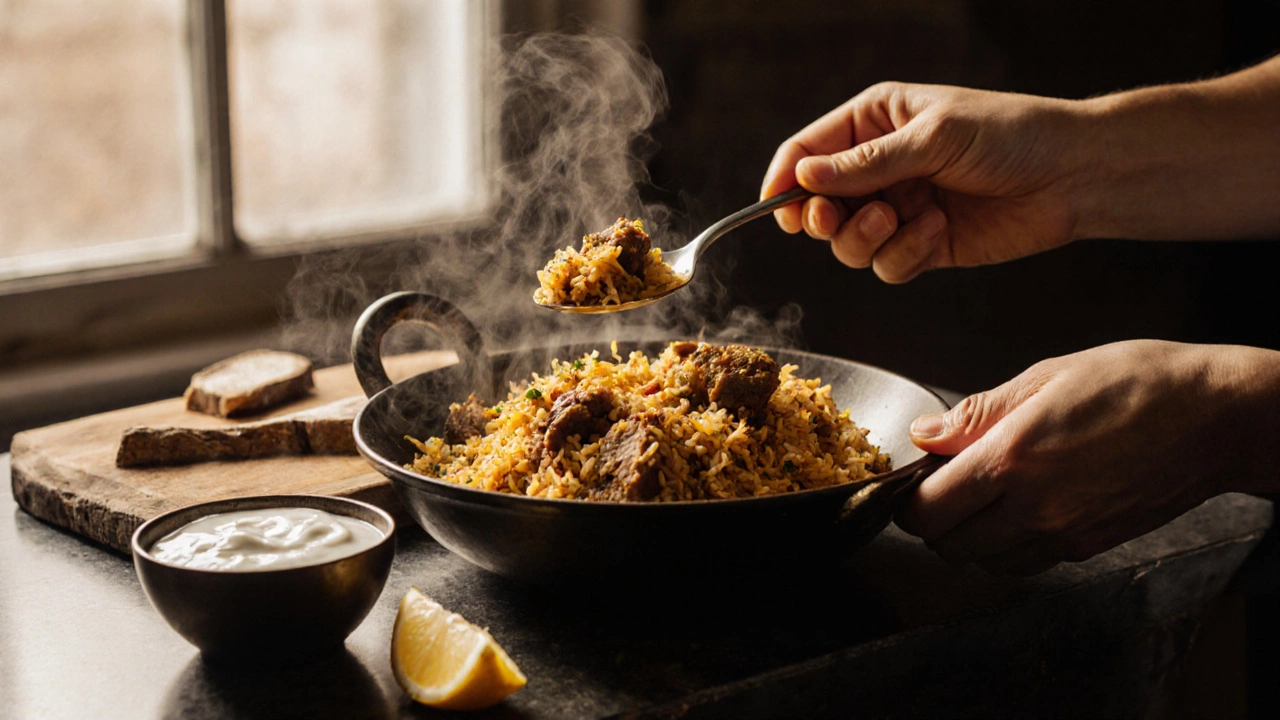World's Tastiest Biryani: Top Picks, Tasting Tips & Authentic Recipes

Biryani Preference Quiz
Discover Your Perfect Biryani
Answer a few questions about your taste preferences to get a personalized biryani recommendation.
How much heat do you prefer in your biryani?
Which protein do you prefer?
What texture do you prefer?
Which flavor profile appeals to you most?
Your Perfect Biryani Style
This style matches your preferences because it offers a perfect balance of .
Everyone argues about the best biryani, but the real question is: which version actually wins your palate? This guide breaks down the most celebrated biryanis from around the globe, explains why they taste so amazing, and shows you how to recreate the magic at home.
What Makes a Biryani Truly Delicious?
Before we name the champions, let’s set the scoring rubric. A biryani’s flavor hinges on four pillars:
- Rice quality - long‑grain, aromatic varieties like Basmati carry the spice bouquet.
- Protein harmony - the meat (or veg) should be tender yet distinct, absorbing the spice mix without turning mushy.
- Spice balance - layers of roasted whole spices, ground masalas, and aromatics (saffron, rose water) create depth.
- Cooking technique - the "dum" method traps steam, letting flavors fuse over low heat.
When these elements align, the result is fragrant, flavorful, and unforgettable.
Top 5 Biryani Styles That Claim the Crown
Each of these biryanis has earned a reputation for taste excellence. Below, we define them, note their signature traits, and point out where you can try them.
Hyderabadi Biryani is a rich, spicy rice‑meat combo originating from Hyderabad, India. It famously uses raw and cooked meat layers, a generous dose of fried onions (birista), and a splash of saffron‑infused milk for color. The hallmark is a bold, slightly tangy flavor from curd and mint leaves.
Lucknowi (Awadhi) Biryani is a subtle, aromatic variation from Uttar Pradesh, India. Cooked on a "dum" fire with a sealed pot, it relies on mild spices, rose water, and a delicate balance of ghee and yogurt. Its texture is softer, and the meat remains almost melt‑in‑your‑mouth.
Kolkata Biryani is a fusion biryani influenced by Bengali cuisine. It incorporates boiled eggs, potatoes, and a sweet hint of raisins, all wrapped in a fragrant, slightly sweet rice. The gentle sweetness differentiates it from its northern cousins.
Karachi Biryani is a robust, pepper‑forward Pakistani staple. It lives on deep‑fried onions, green chilies, and a hearty tomato‑onion gravy that seeps into the rice. Expect a smoky, fiery punch.
Malabar (Kerala) Biryani is a coastal Indian version using short‑grain Jeerakasala rice, coconut milk, and subtle cardamom notes, often paired with chicken or mutton. The coconut adds a creamy, slightly sweet undertone.
Side‑by‑Side Comparison
| Style | Region | Rice Type | Typical Protein | Signature Aroma | Spice Level |
|---|---|---|---|---|---|
| Hyderabadi | Telangana, India | Basmati | Lamb or chicken | Saffron + fried onions | Medium‑high |
| Lucknowi (Awadhi) | Uttar Pradesh, India | Basmati | Chicken or goat | Rose water + mild garam masala | Low‑medium |
| Kolkata | West Bengal, India | Medium‑grain | Chicken + boiled egg + potatoes | Raisins & subtle sweetness | Medium |
| Karachi | Sindh, Pakistan | Basmati | Beef or chicken | Deep‑fried onions & chilies | High |
| Malabar | Kerala, India | Jeerakasala (short‑grain) | Chicken or mutton | Coconut milk & cardamom | Low‑medium |

How to Taste Biryani Like a Pro
When you sit down with a bowl, follow these steps to catch every nuance:
- Smell first - inhale deeply; note the spice bouquet (saffron, cumin, cinnamon).
- Observe the rice - each grain should be separate, glossy, and slightly firm (al dente).
- Take a bite that includes meat, rice, and any garnish in one mouthful. This lets the flavors meld.
- Pay attention to texture - the meat should be tender, the rice fluffy, and any added veggies (potato, egg) should feel cooked but not mushy.
- Finish with a sip of refreshing yogurt‑raita or a squeeze of lemon to reset your palate.
Repeating this for each style reveals why the “tastiest” biryani often depends on personal spice tolerance and texture preference.
Authentic Recipes to Recreate the Winners at Home
Below are quick‑start recipes for each champion. All use readily available ingredients.
Hyderabadi Biryani (Chicken)
- 2 cups aged Basmati rice, rinsed and soaked 30min.
- 500g chicken, marinated in yogurt, ginger‑garlic paste, red chili powder, and turmeric for 2hr.
- Fry thinly sliced onions until deep brown, reserve half for layering.
- Layer rice, chicken, fried onions, chopped mint, cilantro, and saffron‑milk.
- Seal pot with dough, cook on low flame (dum) for 30min.
Lucknowi (Awadhi) Biryani (Mutton)
- Use the same Basmati rice, parboiled with whole cloves, cardamom, and bay leaf.
- Mutton pieces simmered in yogurt, fried onions, and a light garam masala.
- Add rose water and a drizzle of ghee before the final dum.
Kolkata Biryani (Chicken + Egg)
- Medium‑grain rice cooked with a hint of milk for softness.
- Boil eggs, peel, and halve; set aside.
- Cook chicken with potatoes, a pinch of sugar, and a few raisins.
- Layer rice, egg halves, and chicken mixture; finish with a splash of ghee.
Karachi Biryani (Beef)
- Prepare a thick tomato‑onion gravy spiced with green chilies, cumin, and black pepper.
- Par‑cook Basmati rice with a few strands of saffron.
- Layer beef gravy, rice, and generous fried onions; seal and simmer 20min.
Malabar Biryani (Chicken)
- Use short‑grain Jeerakasala rice, washed and soaked 20min.
- Cook chicken in coconut milk, cardamom, and a dash of cinnamon.
- Layer rice and chicken, garnish with fried onions and toasted cashews.

Common Pitfalls & Pro Tips
Even seasoned cooks stumble. Here’s how to avoid the usual mistakes:
- Over‑cooking rice: Use a rice‑to‑water ratio of 1:1.5 for Basmati; check doneness at the “al dente” stage.
- Skipping the marination: A minimum of 30minutes lets the meat absorb spices; overnight is ideal.
- Leaking steam during dum: Seal the pot tightly with dough or a heavy lid; any steam escape makes the rice dry.
- Using low‑quality saffron: Genuine saffron threads (red, not orange) give both color and aroma; a pinch goes a long way.
- Ignoring layering order: Always start with a thin rice layer, then protein, then aromatic toppings. This ensures even flavor distribution.
Frequently Asked Questions
Frequently Asked Questions
Which biryani is considered the healthiest?
The Malabar biryani uses coconut milk, which adds healthy fats, and often includes lean chicken. Pair it with extra veggies for a balanced meal.
Can I make biryani without a heavy pot?
Yes. A deep skillet with a tight‑fitting lid works. Place a heavy pan or foil on top before sealing the lid to mimic the dum pressure.
Is it okay to use frozen meat?
Freeze‑thawed meat is fine, but ensure it’s fully thawed and patted dry; excess moisture can make the rice soggy.
What’s the difference between “dum” and regular stovetop cooking?
“Dum” is a sealed, slow‑steam method that locks in aromas. Regular stovetop cooking leaves steam to escape, producing a dryer texture.
Can I substitute basmati with another rice?
Basmati’s distinct fragrance and long grain are key to classic biryani, but a high‑quality long‑grain rice like Jasmine can work in a pinch, though the flavor profile will shift.
So, which biryani wins the title of the tastiest? It depends on the flavors you crave - smoky heat, delicate rose, sweet raisins, or creamy coconut. Try a few, follow the tasting guide, and decide for yourself.